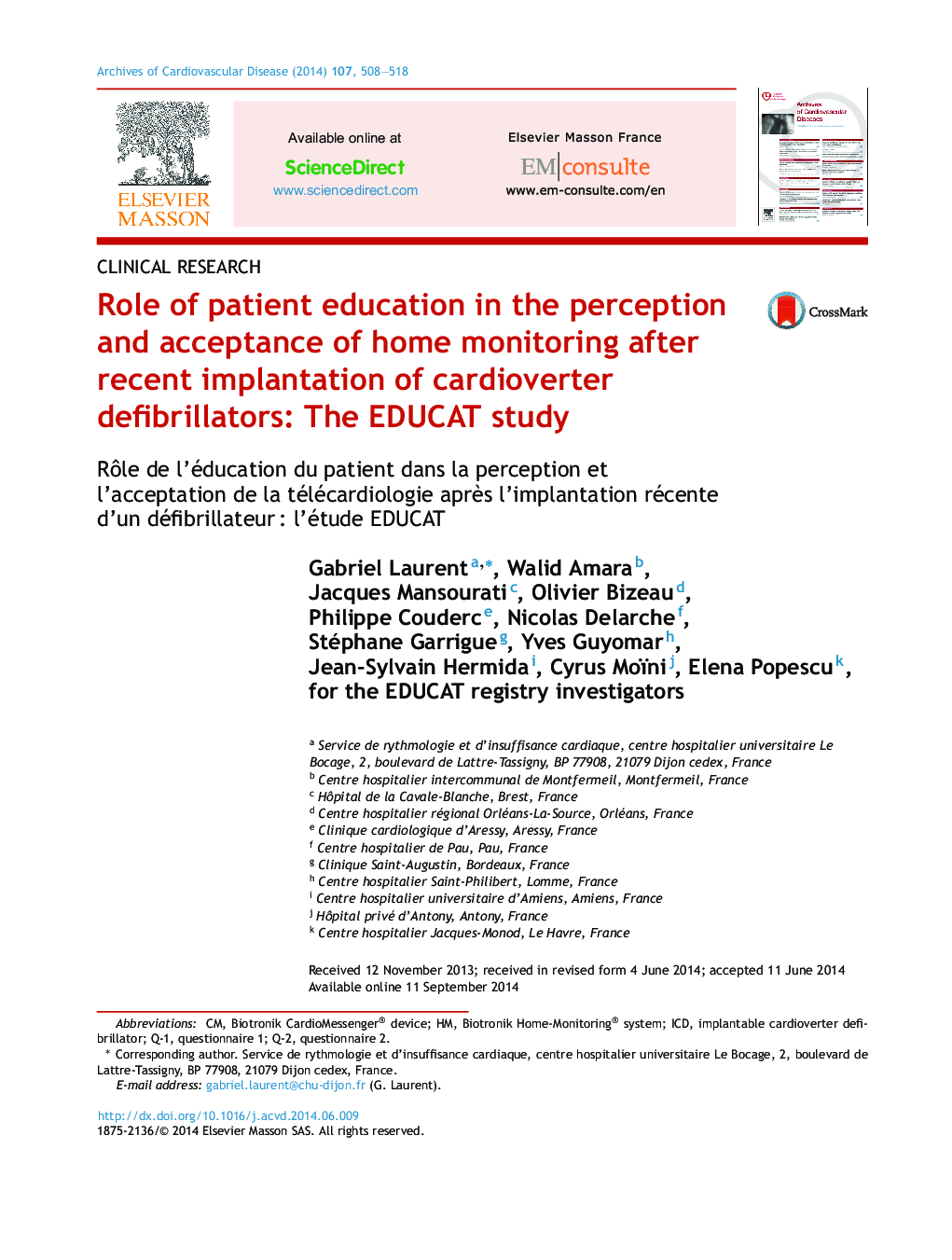| کد مقاله | کد نشریه | سال انتشار | مقاله انگلیسی | نسخه تمام متن |
|---|---|---|---|---|
| 2888967 | 1574351 | 2014 | 11 صفحه PDF | دانلود رایگان |

SummaryBackgroundMuch attention is being paid to the education of and provision of medical information to patients, to optimize their understanding and acceptance of their disease.AimsTo ascertain the impact of educating recent recipients of an implantable cardioverter defibrillator (ICD) on their perception and acceptance of a home monitoring (HM) system.MethodsQuestionnaire 1, completed one month after ICD implantation, was designed to assess: the quality of patient preparation for HM; patient comprehension of HM; and patient anxiety experienced during its installation. The comprehension questions were assigned a score of –2 for an incorrect answer, +1 for a correct answer and 0 for neither (total score ranging from –40 to +20). Questionnaire 2, completed six months after ICD implantation, assessed patient acceptance of and anxiety about HM.ResultsThe registry included 571 patients (mean age 63.9 ± 12.8 years; 83% men; 76% of ICDs implanted for primary prevention) followed by HM for 6.2 ± 1.2 months. Questionnaire 1 was completed by 430 (75.3%) patients and questionnaire 2 by 398 (69.7%) patients. Younger patients had a better comprehension of HM than older patients. High-quality training conditions improved the comprehension score, and a positive association was observed between anxiety and acceptance levels and the comprehension score. The 80 ± 20% mean data transmission rate (days of transmission/days of follow-up ratio) was unrelated to the comprehension scores.ConclusionA clear understanding was associated with a higher acceptance of HM, although it was unrelated to the data transmission rate.
RésuméContexteUn grand intérêt est porté à l’éducation et l’information des patients et de leur entourage, afin d’améliorer leurs connaissances de la maladie.ObjectifsDéterminer l’importance de l’éducation des porteurs de défibrillateurs automatiques implantables (DAI) concernant leur perception et acceptation de la télécardiologie.MéthodesLe premier questionnaire (Q-1) complété 1 mois après l’implantation des DAI, fut conçu pour examiner (1) la qualité de la formation des patients en télécardiologie, (2) leur compréhension du système, et (3) l’anxiété qu’ils ressentirent lors de l’installation. Un score de compréhension s’étendant de –40 à +20 fut calculé en attribuant –2 aux réponses incorrectes, +1 aux réponses correctes et 0 aux réponses manquantes. Le questionnaire 2 (Q-2), complété 6 mois après l’implantation des DAI, fut conçu pour évaluer l’acceptation et l’anxiété de la télécardiologie.RésultatsLe registre a inclus 571 patients (âge moyen = 63,9 ± 12,8 ans, 83 % d’hommes, 76 % de prévention primaire) suivis par télécardiologie pendant 6,2 ± 1,2 mois. Q-1 fut complété par 430 (75,3 %) et Q-2 par 398 (69,7 %) patients. Les plus jeunes avaient une meilleure compréhension de la télécardiologie que les plus âgés. Une formation dans de bonnes conditions a amélioré le score de compréhension et une association significative fut identifiée entre le niveau d’anxiété et d’acceptation, et le niveau de compréhension. Le taux de transmission moyen (nombre de jours de transmission/nombre de jours de suivi) fut 80 ± 20 % et n’était pas lié à la compréhension.ConclusionIndépendamment du taux de transmission, la compréhension de la télécardiologie était associée avec son acceptation.
Journal: Archives of Cardiovascular Diseases - Volume 107, Issue 10, October 2014, Pages 508–518